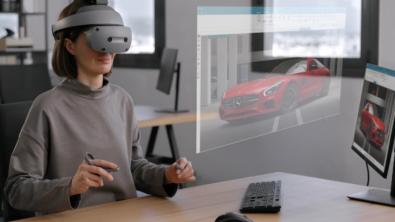Building a virtual classroom for advanced robotics

The 2020 pandemic forced a shift from physical to virtual across many facets of life; from education to labor, many people’s daily lives became even more digital. This virtual revolution helped many preserve a sense of normalcy and lead to innovation in technologies such as the metaverse. In the same way, industrial robots can reap the benefits of virtual environments.
Training for industrial robots was once like a traditional school: rigid, predictable, and limited to time-consuming repetition. Now with the rise of the industrial metaverse—a virtual space that expands on the physical world which fosters efficiency, productivity, sustainability, and connectivity—engineers can train advanced, industrial grade robots with unprecedented flexibility.
Educating robots
The industrial metaverse is still new, but its training capabilities for robots are unparalleled. Taking full advantage of the industrial metaverse’s simulation abilities, manufacturers can create immersive settings that perfectly imitate physical factories and production lines. In this virtual classroom, robots can practice tasks, address common challenges, and develop problem-solving skills in just hours, rather than months or years.
These virtual classrooms are powered by the digital twin and AI, which work in tandem to guarantee that these classrooms stay accurate to the real-life machine and systems they mimic. Unlike physical environments where engineers are limited by both time and unavoidable tangible constraints, simulated environments provide settings with no restrictions, enabling robots to learn to tackle even unanticipated problems. Additionally, since the virtual classroom is digitally constructed, creating training scenarios is quicker and more cost-effective than setting them up in the real world.
Increasing adaptability
Already, many organizations have seen impressive gains from utilizing AI and the industrial metaverse for robotics training. Researchers have used LLMs in combination with computer vision to provide continuous feedback to the robot on whether it has successfully completed a task. This feedback loop accelerates the learning process and has led to the introduction of robot utility models that successfully perform basic tasks across unfamiliar settings without additional training up to 90% of the time.
Leveraging the digital twin and robotic inspection, a robotics firm has devised a method to generate 3D models of industrial environments which then function as the environments’ digital twin. The digital twin then integrates operational data, such as temperature, pressure, and flow rates to create virtual replicas of physical facilities. In this virtual domain, robots can train, speeding up training and deployment, allowing them to perform successfully with minimal on-site setup.
Additionally, Siemens has developed SIMATIC Robot Pick AI which can help manufacturers transform their standard robots into complex, adaptable machines. SIMATIC Robot Pick AI harnesses both AI and digital twin capabilities. Trained on synthetic data, the AI prepares robots to handle unpredictable tasks with over 98% accuracy.
Through utilizing the vast capabilities of AI and deploying the digital twin, organizations have crafted techniques that improve robot versatility. Virtual classrooms are not only reducing risk and operational costs but could potentially prepare robots to create tomorrow’s products.
Foundations for the future
Organizations will reap the rewards of well-educated robots. Taught in the industrial metaverse, industrial robots will be able to meet the rising demand for adaptive production. The digital twin and industrial metaverse enables manufacturers to deploy advanced robotics with dramatically reduced setup times, meanwhile, the enhanced adaptability of AI-powered vision systems helps improve the flexibility of product lines in response to changing market demands.
Manufacturers today are already seeing massive gains in robot flexibility. Taking advantage of AI and simulation, robots have learned to handle new tasks and process new environments with exceptional success rates. This helps manufacturers keep ahead of a constantly shifting landscape while addressing accelerating demands for high-quality products.
To get a more in-depth look at the ways the manufacturing industry is innovating within the advanced robotics space with the digital twin and AI, read this informative insight from MIT Review.
Siemens Digital Industries Software helps organizations of all sizes digitally transform using software, hardware and services from the Siemens Xcelerator business platform. Siemens’ software and the comprehensive digital twin enable companies to optimize their design, engineering and manufacturing processes to turn today’s ideas into the sustainable products of the future. From chips to entire systems, from product to process, across all industries. Siemens Digital Industries Software – Accelerating transformation.


